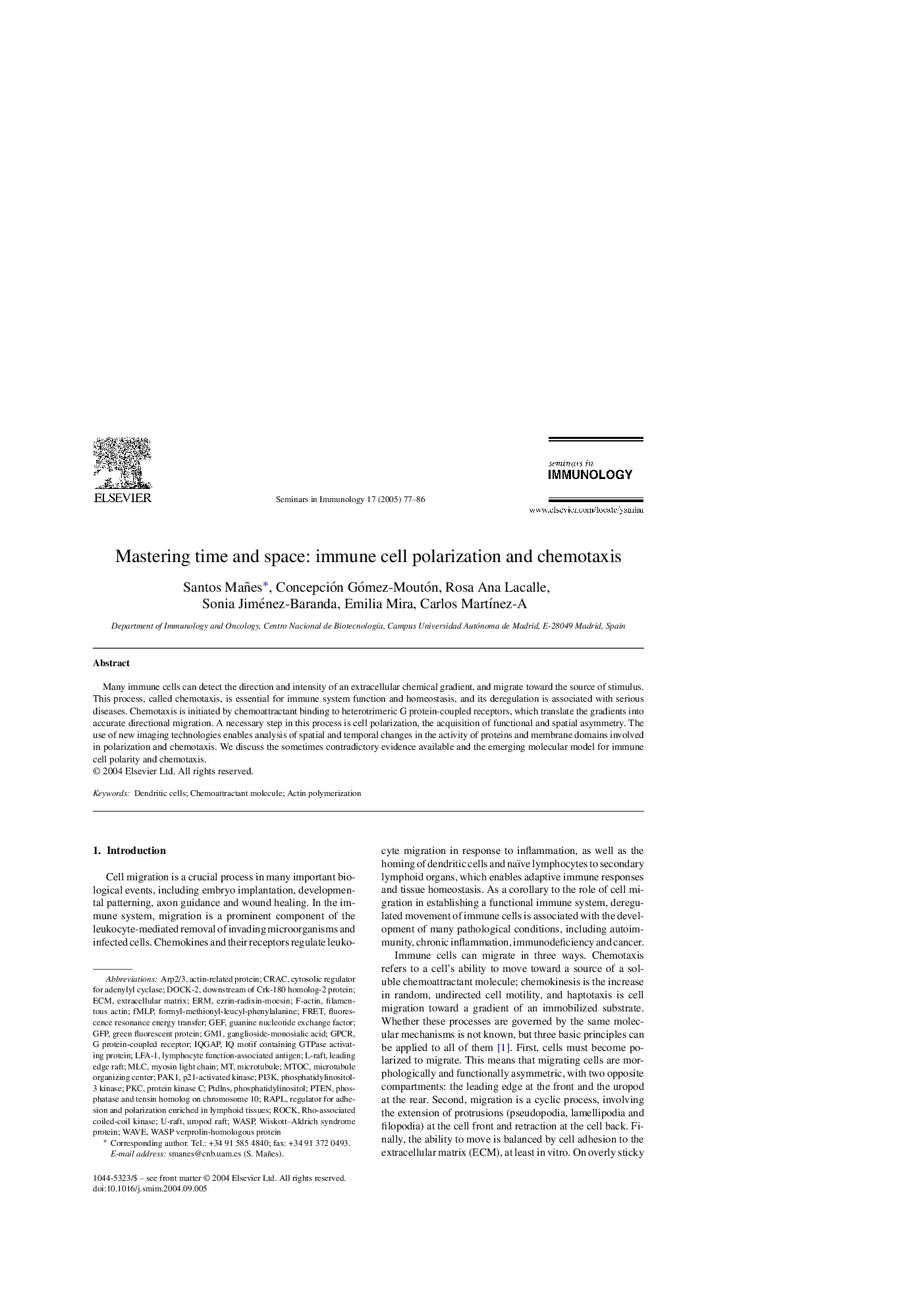| Article ID | Journal | Published Year | Pages | File Type |
|---|---|---|---|---|
| 9273618 | Seminars in Immunology | 2005 | 10 Pages |
Abstract
Many immune cells can detect the direction and intensity of an extracellular chemical gradient, and migrate toward the source of stimulus. This process, called chemotaxis, is essential for immune system function and homeostasis, and its deregulation is associated with serious diseases. Chemotaxis is initiated by chemoattractant binding to heterotrimeric G protein-coupled receptors, which translate the gradients into accurate directional migration. A necessary step in this process is cell polarization, the acquisition of functional and spatial asymmetry. The use of new imaging technologies enables analysis of spatial and temporal changes in the activity of proteins and membrane domains involved in polarization and chemotaxis. We discuss the sometimes contradictory evidence available and the emerging molecular model for immune cell polarity and chemotaxis.
Keywords
fMLPECMCRACPKCLFA-1Rho-associated coiled-coil kinaseGPCRGM1ERMPAK1GEFMLCWASPMTOCF-actinezrin-radixin-moesinIQGAPGFPRAPLPtdlnsPI3Kphosphatase and tensin homolog on chromosome 10filamentous actinArp2/3Lymphocyte Function-associated AntigenFluorescence resonance energy transferFRETMicrotubulemyosin light chainDendritic cellsguanine nucleotide exchange factorFormyl-methionyl-leucyl-phenylalaninephosphatidylinositolphosphatidylinositol-3 kinaseExtracellular matrixmicrotubule organizing centerWaveWiskott–Aldrich syndrome proteingreen fluorescent proteinActin-related proteinProtein kinase CActin polymerizationPtenp21-activated kinaseG protein-coupled receptorRock
Related Topics
Life Sciences
Immunology and Microbiology
Immunology
Authors
Santos Mañes, Concepción Gómez-Moutón, Rosa Ana Lacalle, Sonia Jiménez-Baranda, Emilia Mira, Carlos MartÃnez-A,
